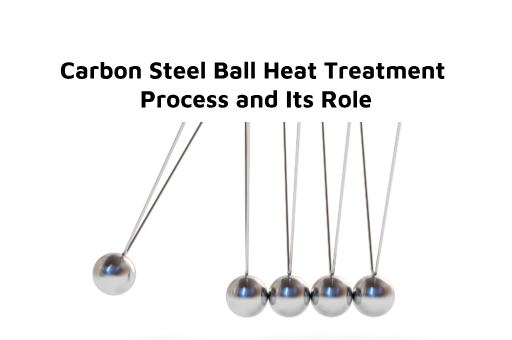
 Home > News
Home > NewsIn the manufacturing of carbon steel balls, the heat treatment process plays a crucial role in enhancing their mechanical properties, durability, and performance. This process involves controlled heating and cooling of the steel balls to achieve desired characteristics such as hardness, strength, and wear resistance. Understanding the heat treatment process and its significance is essential for manufacturers and users who rely on carbon steel balls in various applications.

Heat Treatment Process
The heat treatment of carbon steel balls typically involves the following key stages:
Annealing:
Purpose: Annealing is the initial heat treatment process used to relieve internal stresses, improve ductility, and refine the grain structure of carbon steel. It involves heating the steel balls to a specific temperature and then slowly cooling them in a controlled environment.
Process: The steel balls are heated to a temperature below the critical point, typically between 800°C and 900°C. After reaching the desired temperature, the balls are held at that temperature for a specified duration and then slowly cooled in a furnace or air.
Outcome: This process softens the steel, making it more workable for subsequent forming and machining processes. It also reduces the risk of cracking and improves the overall uniformity of the material.
Quenching:
Purpose: Quenching is employed to increase the hardness and strength of carbon steel balls. This is achieved by rapidly cooling the steel balls from a high temperature.
Process: The steel balls are heated to a temperature above the critical point, typically between 850°C and 950°C, and then quickly immersed in a quenching medium such as oil, water, or air. The rapid cooling transforms the microstructure of the steel, resulting in increased hardness.
Outcome: Quenching creates a hard and brittle martensitic structure, which significantly enhances the wear resistance and surface hardness of the carbon steel balls. However, this process may also introduce internal stresses, which need to be addressed in subsequent steps.
Tempering:
Purpose: Tempering is performed to reduce the brittleness introduced by quenching and to achieve a balance between hardness and toughness.
Process: The quenched steel balls are reheated to a temperature below the critical point, typically between 150°C and 650°C, and held at that temperature for a specific period. The exact temperature and duration depend on the desired final properties.
Outcome: Tempering relieves the internal stresses, reduces brittleness, and improves the toughness of the steel. The result is a material that retains high hardness while being less prone to cracking under stress.
Case Hardening (Optional):
Purpose: In some applications, carbon steel balls undergo case hardening to create a hard outer layer while maintaining a softer, more ductile core.
Process: Case hardening involves carburizing or nitriding the surface of the steel balls, introducing carbon or nitrogen to form a hardened case. This is followed by quenching and tempering.
Outcome: The result is a carbon steel ball with an extremely hard surface layer, offering excellent wear resistance, while the core remains tough and able to absorb impact without fracturing.
Role of Heat Treatment in Carbon Steel Ball Performance
The heat treatment process is vital in determining the final properties of carbon steel balls, which directly impact their performance in various applications. Here's how heat treatment influences key performance aspects:
Hardness:
Heat treatment increases the hardness of carbon steel balls, making them more resistant to wear and abrasion. This is particularly important in applications where the balls are subjected to heavy loads and friction, such as in bearings and automotive components.
Strength:
By refining the microstructure through heat treatment, the tensile strength of carbon steel balls is enhanced. This allows them to withstand higher forces without deformation or failure, making them suitable for demanding applications.
Toughness:
Tempering improves the toughness of the steel balls, reducing the likelihood of cracking under stress. This is essential in applications where the balls are exposed to impact or fluctuating loads.
Wear Resistance:
The combination of increased hardness and a controlled microstructure contributes to the wear resistance of carbon steel balls. This ensures a longer service life, reducing the need for frequent replacements and maintenance.
Dimensional Stability:
Heat treatment helps in achieving dimensional stability by relieving internal stresses. This is crucial for maintaining the precision and accuracy of carbon steel balls, especially in high-precision applications like aerospace and precision bearings.
Conclusion
The heat treatment process is a critical step in the manufacturing of carbon steel balls, significantly influencing their mechanical properties and overall performance. By carefully controlling the heating and cooling stages, manufacturers can tailor the hardness, strength, toughness, and wear resistance of the steel balls to meet the specific requirements of various applications. Whether used in bearings, automotive components, or industrial machinery, the reliability and durability of carbon steel balls are directly tied to the effectiveness of their heat treatment process.
View More(Total0)Comment Lists